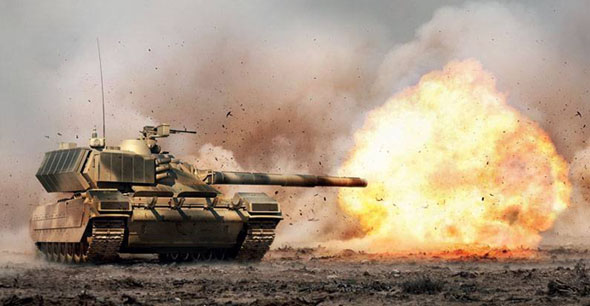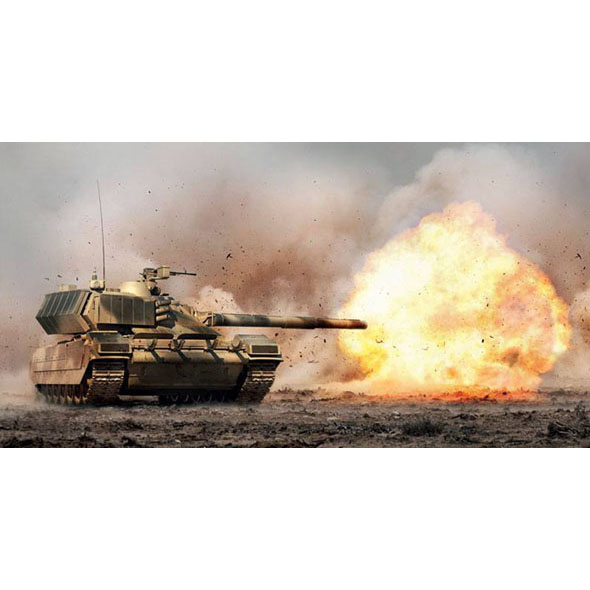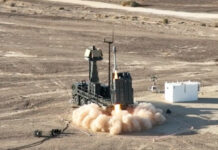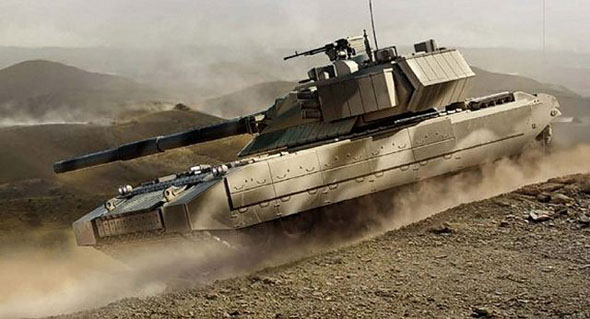
The Russian Army is planning to begin modernize its armored and mechanized forces beginning in 2015, fielding a new family of vehicles comprising a new main battle tank, armored infantry fighting vehicles, and various support platforms. The new tank was expected to be unveiled exclusively to Russian leadership at the Arms Expo exhibition at Nizhny Tagil in September, 2013. Along with a new tracked vehicle and new family of wheeled vehicles. Eventually, the new tank was unveiled quietly to Top VIP, inside the ‘presentation pavilion’ reserved for the Terminator-2 BMPT72. This pavilion was oversized for that type of vehicle, and was opened to the press only on the first day of the event. The new tank was hidden from the public eye and is likely to remain secret util it’s planned fielding in 2015
The MBT will be based on the new Armata, the prototype is scheduled to enter field trials in 2013, about 10 months ahead of schedule. First Deputy Defense Minister Alexander Sukhorukov said. The new tank is under development at Uralvagonzavod in Omsk. The first deliveries of the tank to the Russian Armed Forces are scheduled for 2015. A total of 2,300 MBTs are expected to be supplied by 2020.
It should be remembered that the Russians are building their fighting forces not only against NATO, but more importantly, to protect their long southern borders with radical Islamic countries that may be gathering military power, and the growing dominance of China in the east. Armored and mechanized forces are key to maintaining military superiority or parity against such threats. The level of sophistication in meeting such threats is not as demanding as meeting the advanced technology fielded by US and NATO forces.[nonmember]
The full version of this article is available
as part of our Premium Content.
[/nonmember] According to preliminary reports, the new tank designated T-99 will be less radical and ambitious than the failed ‘Object 195’ or T-95, it will weigh less, therefore, become more agile and will be more affordable, compared to its more ambitious predecessors.
[ismember]
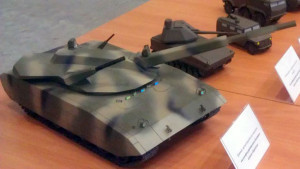
The new family of vehicles will comprise the new ‘Armata’ main battle tank, a heavy infantry fighting vehicle, a combat engineering vehicle, an armored recovery vehicle, a heavy armored personnel carrier, self-propelled artillery and possibly a tank support combat vehicle utilizing two distinct platforms schemes. The tank will employ a heavier, more protected platform, mounting an overhead remote controlled turret. The power pack runs on a X shaped 1,350 -1,500 hp turbocharged 12 cylinder diesel, (an optional hybrid electric propulsion is also being considered). At a suggested 50-52 ton weight class, this diesel engine will position Aramata at a high power to weight ratio of around 26, comparable to the T-90M and well above the current 20 HP/ton of the T-90S. The engine rating can further increase to 1500 and beyond, but such increase is expected to reduce the engine life span which currently rates above 1,000 hours (based on years of tests on the T-95).

Unlike the large caliber guns considered for the Object 195 and T-95, the T-99 will be armed with a new version of 125mm smoothbore gun already used in the upgraded T-90M. An optional medium caliber automatic cannon (believed to be of 57mm cal automatic gun/grenade launcher) is located on the side of the turret, with separate elevation and possibly some lateral control, providing effective firepower against aerial targets, such as helicopters. Its super-elevation means the elevation or depression of the main gun can be limited, adjusting for extended range engagements by high velocity projectiles or gun-launched guided missiles, which can be controlled from the overhead electro-optics package.
The radical new design is the key for these savings. The low-profile unmanned turret mounting the main weapon and auxiliary weapon systems (main gun, optional automatic cannon and small-caliber machine gun) will comprise separate mounts, individually controlled from three hull-mounted crew stations by the commander, weapon systems operator and driver. Ammunition handling and loading will be fully automatic. The use of multiple remote-controlled weapon station on an MBT has already been implemented on the upgraded T-90M. A concept design that could be depicting early designs of Armata shows three remotely controlled turrets, mounting large caliber gun (125mm), a separate turret mounting a medium caliber automatic cannon/grenade launcher (57mm) and a third remotely controlled machine gun (12.7mm) at the top.
While such a multi-gun concept may seem odd to a western eye, it follows a proven combat lesson from the battles in Chechnya, from which the combat support vehicles evolved. In fact, using this three-tier weapon approach, Armata can assume the BMPT role thus fielding a smaller, more efficient formation suitable for asymmetric fighting and high intensity warfare.
Practical approach to the armor protection enables designers to reduce weight and cost without compromising protection. As the crew seats in an armored protected capsule, highly protected by steel and ceramic materials, separated from the ammunition storage and loading area by an armored bulkhead, the rest of the tank uses protection levels relevant to the vulnerability and importance of the protected area, using the base steel shell, structural components, side skirts, add-on tiles, reactive armor and active protection systems. To increase crew safety and survivability, the crew compartment will be located in a highly protected capsule, isolated from the ammunition storage, engine and fuel compartments. This modular protection concept enables designers to reduce the weight and level of protection to less vulnerable areas, using structural elements for protection (a similar ‘topological armor’ approach was the baseline for armor protection for US Mounted Ground Vehicle (MGV).
According to Uralvagonzavod officials ‘Armata’ will provide a multipurpose basis for infantry fighting vehicles, combat support vehicles and others. They will share common modular systems, accelerating and simplifying field repair and recovery of combat damaged vehicles.
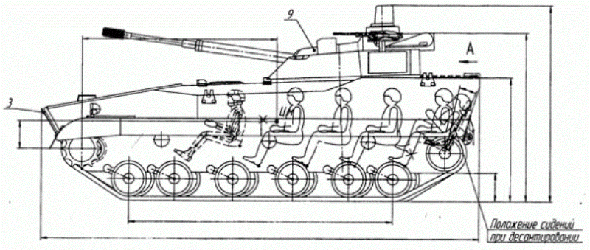
[/ismember]
The Russian industry is also developing the Boomerang family of 8×8 wheeled armored vehicles which will gradually replace the current BTR-90. Additionally, the Kurganets-25 tracked armored vehicle provides high degree of commonality with the new Armata tank. The Kurganets-25 will evolve into various models, gradually replacing BMP and BMD and MT-LB and other types of tracked armored platforms.
